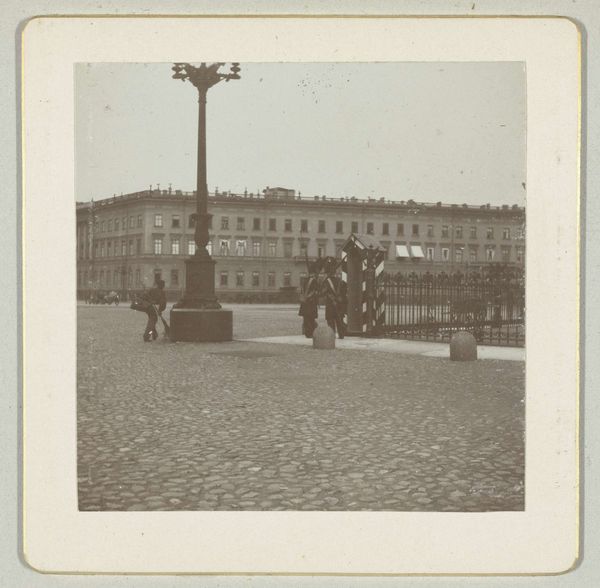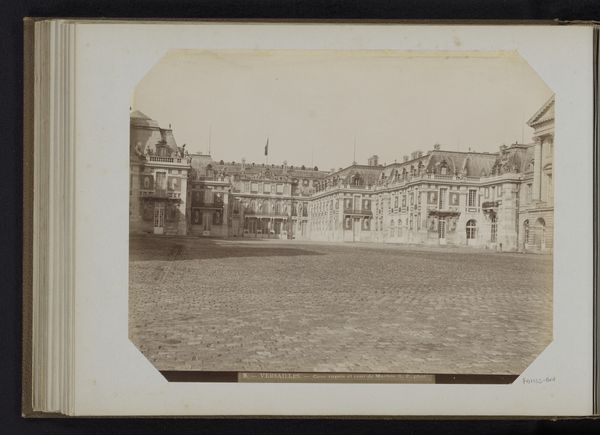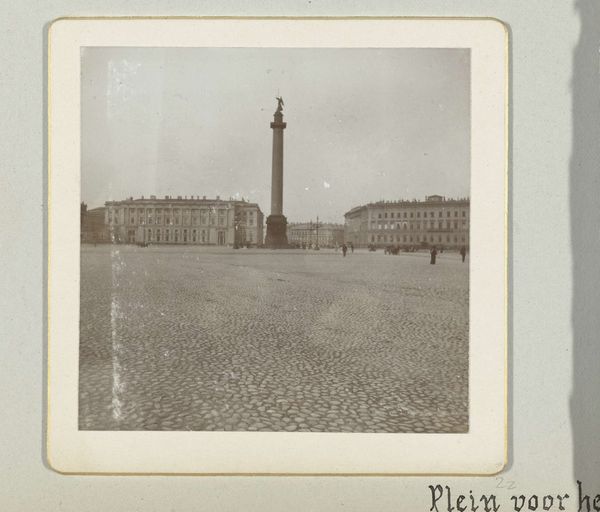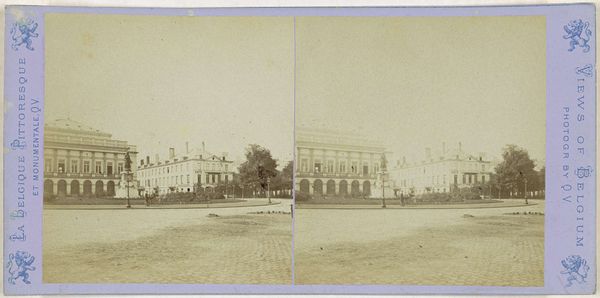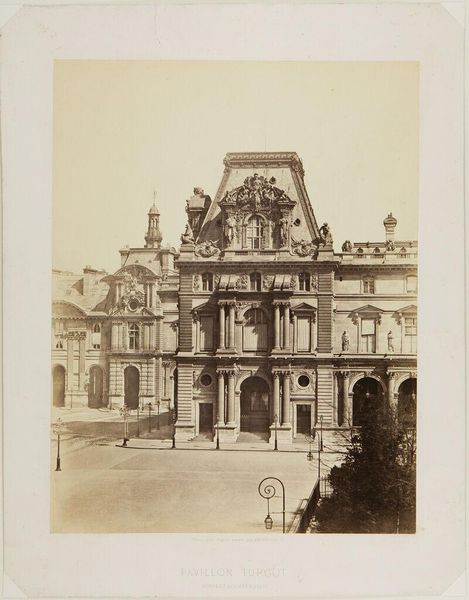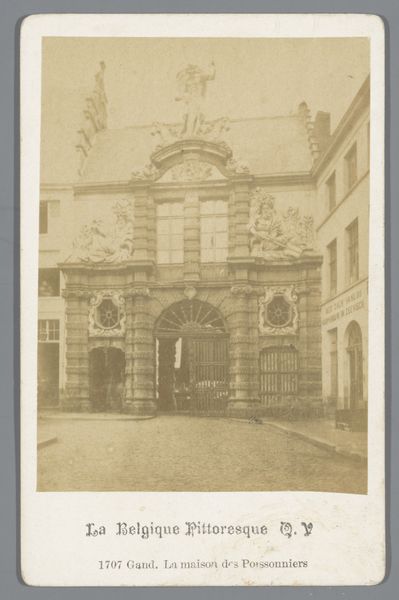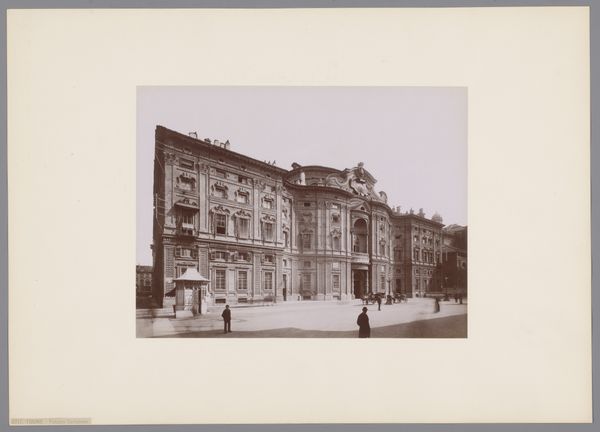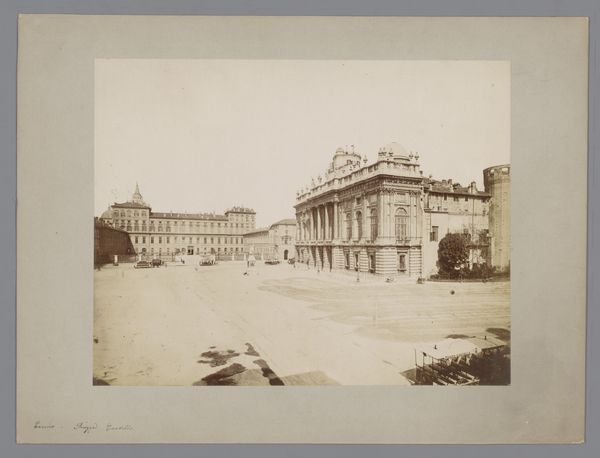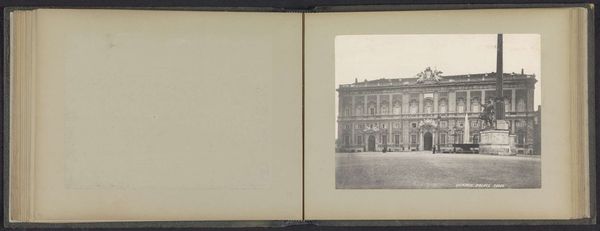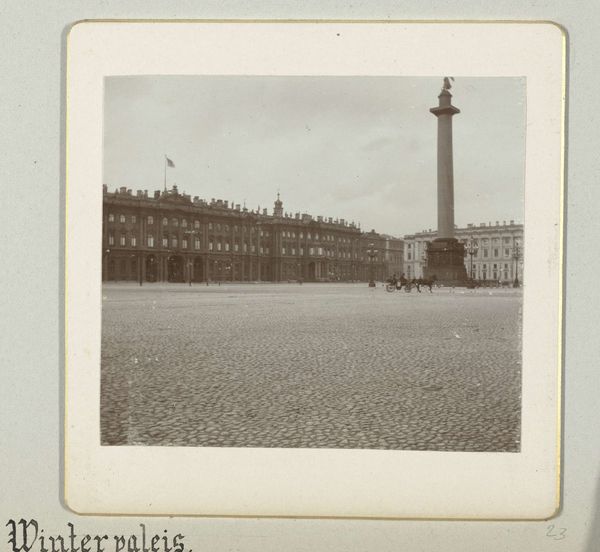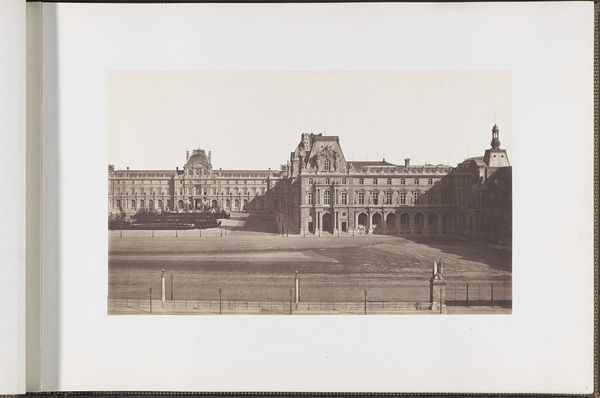
print, photography, gelatin-silver-print
#
pictorialism
# print
#
street-photography
#
photography
#
gelatin-silver-print
#
cityscape
#
realism
Dimensions: height 100 mm, width 100 mm, height 259 mm, width 365 mm
Copyright: Rijks Museum: Open Domain
Curator: This gelatin silver print from 1898 captures "Het plein voor de Hermitage in Sint-Petersburg," or the Palace Square in St. Petersburg. It is by Henry Pauw van Wieldrecht and is now at the Rijksmuseum. My immediate feeling is that the cobblestones give the piece a feeling of historical permanence. Editor: Yes, and those cobblestones also speak to the physical labor required to construct that immense square. All that hand-cut stone, the way it reflects the muted light...it’s about materiality and effort, but it almost obscures the human scale with its monochrome tone. Curator: Precisely. Note the lone figure of the guard standing watch, almost a symbol of the tsarist authority of the time. He is diminutive against the immense backdrop of the Winter Palace. Doesn't it make you think of the enduring nature of power and the individual's place within its spectacle? Editor: Or how even symbols of power rely on physical infrastructures—look at that ornate lamppost; its casting would be another element to consider alongside the building of the Palace. I am seeing also a potential discussion on the chemistry that makes gelatin silver possible in a photograph. It reminds me how technology and power go hand in hand. Curator: Interesting. I see those same components as the iconography of Empire on display. Consider the architectural decisions involved; it reflects the ideals of permanence and stability, doesn't it? It is speaking about the grandeur of the tsarist regime during this time. Editor: Sure, grandeur achieved through very material means! Consider what a contemporary photographic printing process implies for broader accessibility. It raises intriguing ideas about shifting control of information as the 19th Century concludes. Curator: I agree entirely, thinking about this photography on a historical, even symbolic scale changes its impact and interpretation. Editor: Agreed; perhaps its social context gives insight to it that formal visual analysis often misses.
Comments
No comments
Be the first to comment and join the conversation on the ultimate creative platform.
